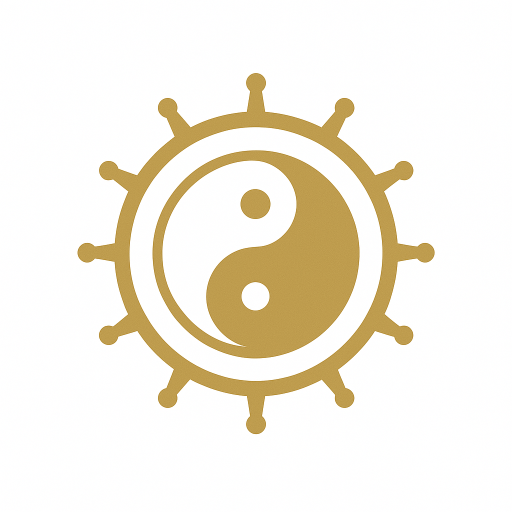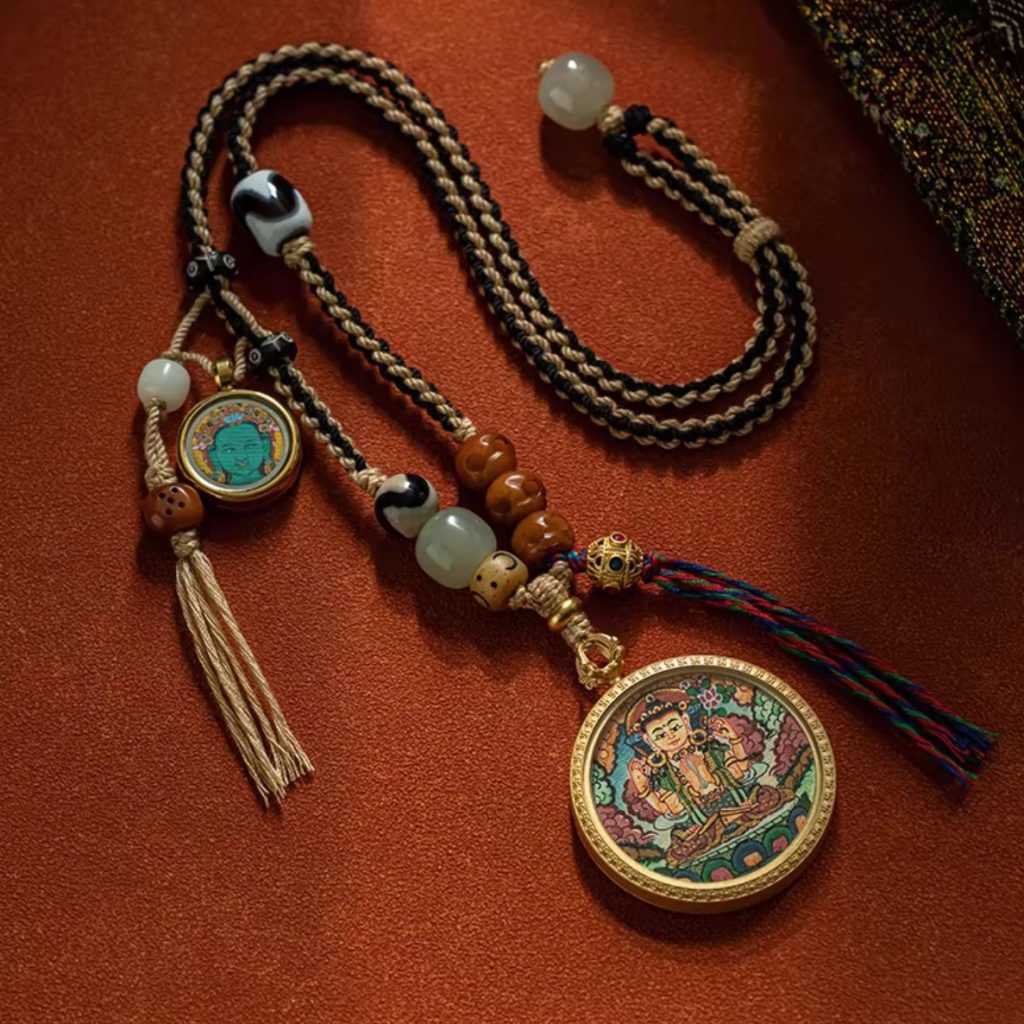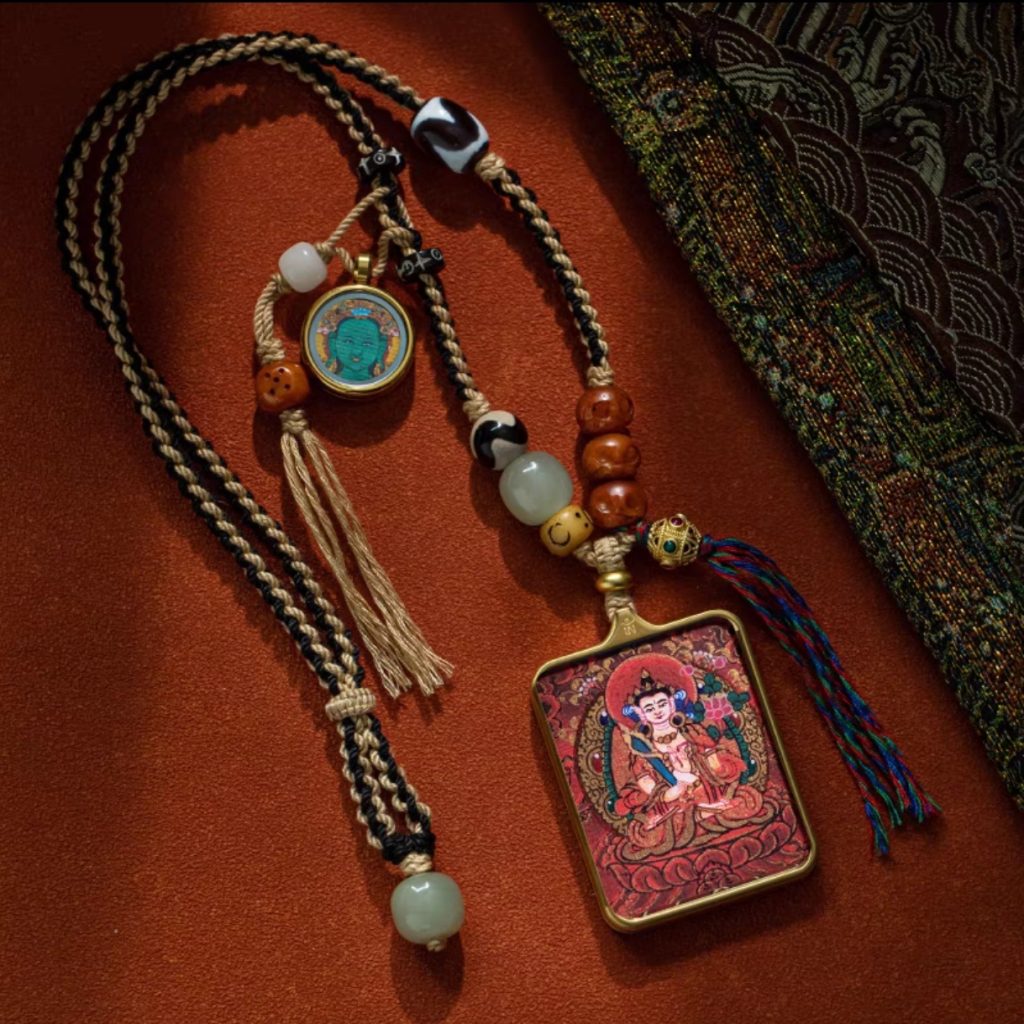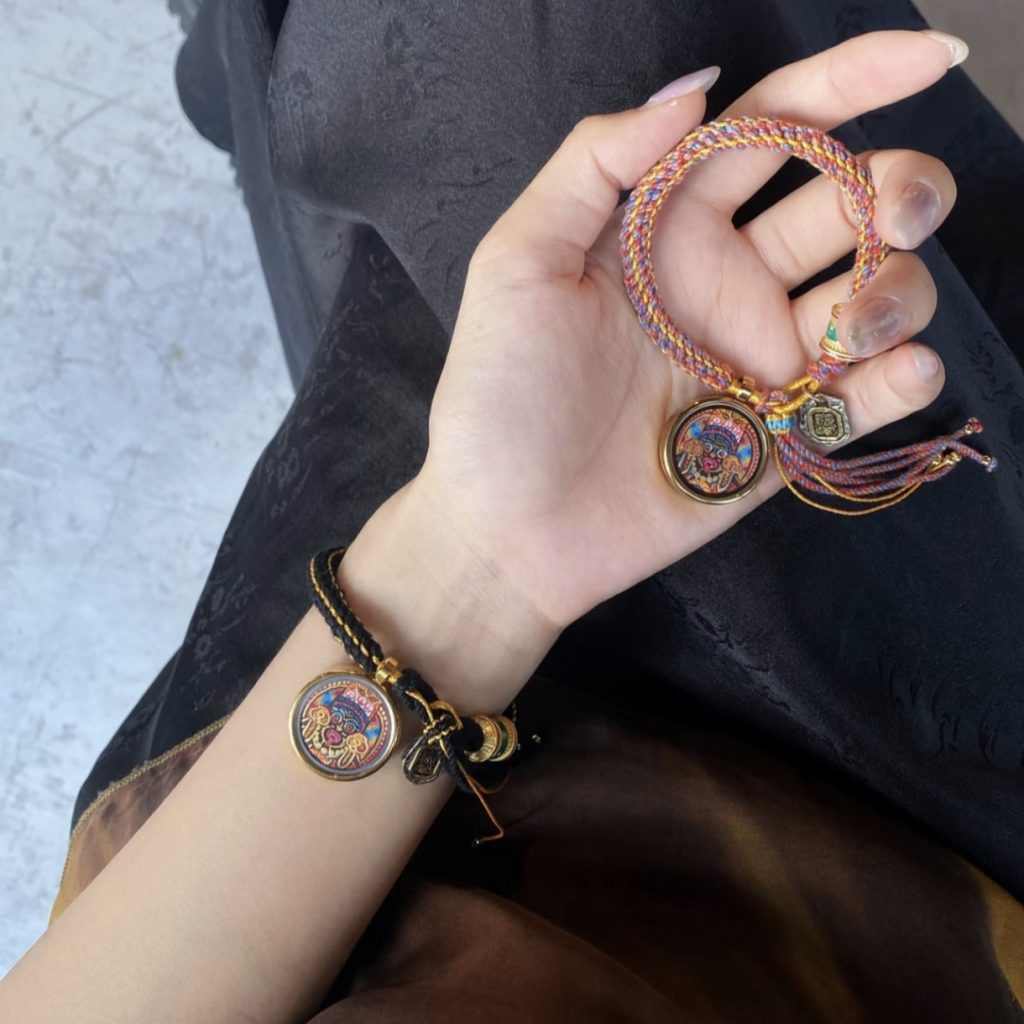Buddha Thangka paintings are traditional Tibetan Buddhist sacred artworks that vividly depict Buddhas, bodhisattvas, and protective deities. These thangkas serve as powerful spiritual tools for meditation, protection, and blessings. This article covers the most renowned buddha thangka types such as green tara thangka, tara thangka, mahakala thangka, medicine buddha thangka, white tara thangka, and guru rinpoche thangka, explaining their appearance, symbolism, and practical uses to help you choose the right thangka for your spiritual needs.
What Is a Buddha Thangka?
A buddha thangka is a finely painted Tibetan scroll artwork that illustrates Buddhist deities, embodying complex iconography and spiritual teachings. Often made on cotton or silk with natural mineral pigments, thangkas are used in rituals, meditation, and as sacred decorations in homes and temples. The paintings are imbued with blessings during consecration ceremonies, transforming them into potent spiritual objects.
Popular Buddha Thangka Types Ranked by Recognition
| Rank | Thangka Type | Appearance Description | Core Symbolism & Name Explanation | Meaning & Practical Use |
|---|---|---|---|---|
| ★★★★★ | Shakyamuni Buddha Thangka | Depicts Buddha Siddhartha Gautama seated cross-legged on a lotus throne, left hand holding a begging bowl, right hand touching the earth (Bhumisparsha mudra). Usually serene with golden robes. | Shakyamuni means “Sage of the Shakya clan,” the historical Buddha who attained enlightenment under the Bodhi tree. His mudra symbolizes victory over Mara (temptations). | Symbolizes core Buddhist teachings, enlightenment, and overcoming obstacles. Used for spiritual guidance, career stability, and harmonizing family life by fostering peace. |
| ★★★★☆ | Avalokiteshvara (Guanyin) Thangka | Often shown as four-armed or with a thousand arms and eyes. The four-armed form holds a lotus, rosary, and has hands in prayer; the thousand-armed form displays countless hands symbolizing infinite compassion. | Known as the Bodhisattva of Compassion. Avalokiteshvara means “Lord who looks down with compassion,” embodying mercy and aid. | Used to relieve suffering, foster compassion, and aid interpersonal harmony. Ideal for those in caregiving professions or strained social relations. |
| ★★★★☆ | Manjushri Thangka | Portrayed riding a blue lion, holding a flaming sword in the right hand to cut through ignorance, and a Prajnaparamita sutra in the left hand. | Manjushri means “Gentle Glory,” the Bodhisattva of Wisdom, representing transcendent insight. | Promotes intellectual clarity, academic success, and breakthroughs in creative or business fields. Revered by students and educators. |
| ★★★★☆ | Medicine Buddha Thangka | Blue-skinned Buddha seated holding a medicinal plant or bowl, often depicted with a healing gesture. | Also called Bhaisajyaguru, the “Healing Buddha,” associated with curing illnesses and spiritual health. | Used to pray for physical healing, health maintenance, and longevity. Helps alleviate stress-induced illnesses and promote work vitality. |
| ★★★★☆ | Tara Thangka (Green & White Tara) | Green Tara is depicted seated in a posture of readiness, right hand in gesture of giving refuge, left holding lotus flower. White Tara has seven eyes (on hands, feet, and forehead) symbolizing vigilance. | Tara means “Liberator.” Green Tara offers swift protection; White Tara symbolizes longevity and wisdom. | Green Tara aids in overcoming fears and sudden difficulties; White Tara enhances long life, healing, and wisdom growth. |
| ★★★☆☆ | Vajrapani Thangka | Depicted as a wrathful blue deity wielding a vajra (thunderbolt), symbolizing power and protection. | Vajrapani means “Holder of the Thunderbolt,” representing the Buddha’s power to overcome obstacles. | Helps protect against negative forces and supports spiritual strength, useful in competitive or challenging environments. |
| ★★★☆☆ | Mahakala Thangka | Fierce six-armed protector deity, blue or black, holding ritual weapons and a skull cup, surrounded by flames. | Mahakala is the Dharma protector who removes obstacles and evil influences. | Ideal for protection of home and business, dispelling negativity, and ensuring smooth progress. |
| ★★★☆☆ | Chakrasamvara and Vajrayogini Thangka | Chakrasamvara is a blue deity embracing his consort Vajrayogini, symbolizing the union of wisdom and compassion. | These represent highest tantric yoga deities, embodying spiritual transformation and enlightenment. | Used by advanced practitioners for deep meditation and spiritual breakthrough. |
| ★★★☆☆ | Palden Lhamo Thangka | Female wrathful protector riding a mule, dark blue in color, holding weapons, symbolizing fierce protection. | Known as the powerful female protector of Tibet and the Dalai Lama lineage. | Used for protection against harm and safeguarding spiritual practice. |
| ★★★☆☆ | Tsongkhapa Thangka | Founder of Gelugpa school, shown wearing yellow hat and holding a sword and book symbolizing wisdom and discipline. | Represents Buddhist monastic discipline and scholarly wisdom. | Supports academic progress, moral integrity, and spiritual discipline. |
Understanding Key Buddha Thangka Terms
- Thangka: A Tibetan Buddhist scroll painting depicting sacred images, used for teaching and meditation.
- Mudra: Symbolic hand gestures of deities representing spiritual states.
- Bodhisattva: Enlightened beings who postpone Nirvana to aid all sentient beings.
- Lotus Seat: Symbolizes purity and spiritual awakening, the seat on which deities are often depicted.
- Mantra: Sacred chants associated with particular deities, believed to invoke their blessings.
How to Choose the Right Buddha Thangka for You
When selecting a buddha thangka, consider your spiritual goals and personal needs. For academic success, manjushri thangka is ideal; for protection and overcoming obstacles, mahakala thangka or green tara thangka may be best. Health concerns call for medicine buddha thangka, while longevity seekers may choose white tara thangka. Many practitioners combine multiple thangkas for comprehensive spiritual support.
How to Care for and Use Buddha Thangkas
Keep your thangka in a clean, elevated place away from direct sunlight and dust. Regularly dust it gently with a silk cloth. Consecration ceremonies performed by lamas imbue the thangka with spiritual power. Use the thangka as a meditation focus or protective talisman, and avoid placing it in impure spaces.
For authoritative information on Tibetan thangka art, see The Met Museum’s Thangka Guide.
Most Popular Buddha Thangkas Among English Speakers
Buddha thangka paintings are not only exquisite works of art but also embody profound Buddhist teachings and spiritual energies. From the compassionate green tara thangka to the protective mahakala thangka, each thangka offers unique blessings. Understanding their appearance, symbolism, and purpose enables you to select and honor the thangka best suited to your spiritual journey.
1. Guru Rinpoche Thangka (Padmasambhava)
Also known as Padmasambhava, Guru Rinpoche is considered the founder of Tibetan Buddhism. His thangka depicts him holding a vajra and skull cup, symbolizing his power to transform negative energies into spiritual awakening. English-speaking practitioners value this thangka for its spiritual guidance, protection, and connection to Tibetan Buddhist lineage. It is often used in meditation spaces and personal altars.
2. Green Tara Thangka
The Green Tara thangka portrays Tara as the embodiment of compassionate action and swift assistance. With a vibrant green hue, she is depicted in a posture ready to spring into action, symbolizing protection from fear and obstacles. This thangka is beloved among English speakers, particularly women, who seek confidence, healing, and empowerment through Tara’s compassionate energy.
3. Medicine Buddha Thangka
Known as Bhaisajyaguru, the Medicine Buddha is revered as the healing Buddha. His thangka typically shows him with a deep blue body, holding a bowl of healing nectar. In the West, this thangka is popular among those pursuing holistic health and spiritual healing. It serves as a focal point for prayers aimed at physical and emotional wellness.
4. Avalokiteshvara (Guanyin) Thangka
The Avalokiteshvara, or Guanyin in East Asia, is the Bodhisattva of Compassion. English-speaking devotees are drawn to the serene and loving energy embodied in this thangka, which often depicts Avalokiteshvara with multiple arms and eyes to aid all beings. It is widely used for cultivating empathy, compassion, and emotional healing.
5. White Tara Thangka
The White Tara thangka features Tara with seven eyes—on her hands, feet, and forehead—representing her vigilance and ability to see suffering everywhere. She symbolizes longevity, wisdom, and healing. This thangka is favored by those seeking to enhance longevity and spiritual clarity.
6. Mahakala Thangka
Mahakala is a fierce protector deity whose thangka shows a wrathful figure surrounded by flames, wielding ritual weapons. Though intimidating in appearance, English-speaking practitioners respect Mahakala for his powerful protection against negative forces and obstacles, especially in career and spiritual practice.
7. Manjushri Thangka
Manjushri is the Bodhisattva of Wisdom, often depicted riding a blue lion and wielding a flaming sword to cut through ignorance. This thangka is particularly popular among students, academics, and creative professionals in English-speaking countries, who seek intellectual clarity, inspiration, and breakthrough in learning.
How to Use Buddha Thangkas in Your Spiritual Practice
Displaying Buddha thangkas in your meditation space or home altar can deepen your spiritual connection and inspire daily mindfulness. Many practitioners meditate while focusing on the thangka, recite associated mantras, or use them for protection and healing blessings. Regular care, such as gentle cleaning and ritual blessings, helps maintain the thangka’s sacred energy.
For further reading on Buddha thangkas and Tibetan Buddhist art, visit the Britannica Thangka Article.
Conclusion
Among English speakers, thangkas such as Guru Rinpoche Thangka, Green Tara Thangka, and Medicine Buddha Thangka stand out as powerful spiritual symbols. Understanding their meanings and applications enriches one’s meditation, healing, and protection practices. Choosing the right Buddha thangka aligns your space with energies that support your personal spiritual journey.




Leave a Reply